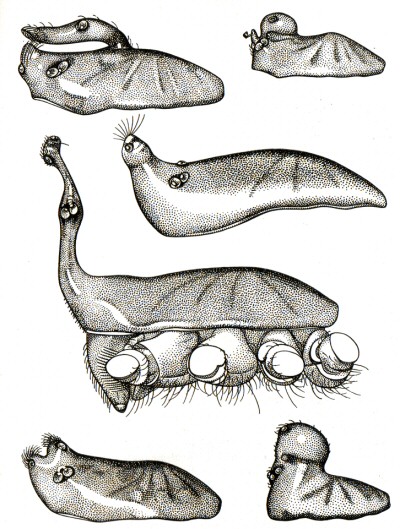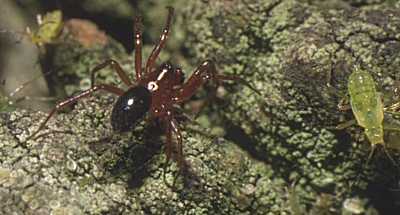This subfamily of small spiders is also known under the name Micryphantidae. The spider has a body length of 1-3 mm although a few may attain lengths up to 10 mm..
These spiders represent 30% of the balooning spiders. (Balooning is traveling by air by means of releasing a long thread that is catched by the air flow.). Because they are so small even the adults of these spiders use balooning as a way of traveling. Many male erigonids have heads pitted and modified in grotesque shapes.
One of the most amazing erigonids is Walckenaeria acuminata whose eyes sits in two groups at the top and middle of a slender tower more than twice the head itself.
Drawing from The world of spider by W.S.Bristowe, 1958 page 271.


This are often dark brown or black spiders with smooth and shiny carapaces (head-breast part). the erigonids are often found near water where they place their 5 cm square webs bewteen the grass.
Erigone arctica is also found on the sea shore were she spins her web between the cavities of seaweed and amongst pebbles where the sea must often cover her at high tide. These spider may happily run over the surface of water for a few centimeters. If no dry land is found the will return to their starting point with the help of their anchor thread they trail before making their sorties. The spiders can survice under water during high tide without making an air supply. They survive with the air stored in theit book-lungs and trachea. (W.S. Bristowe)
